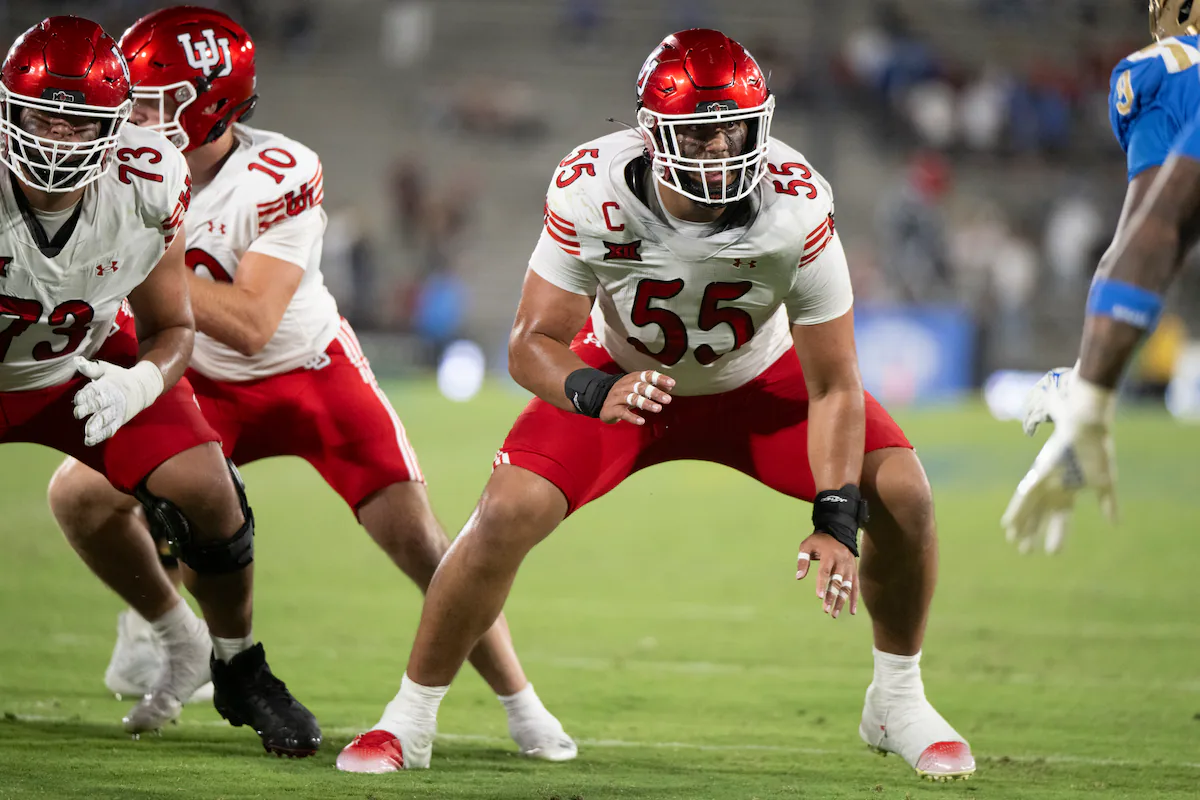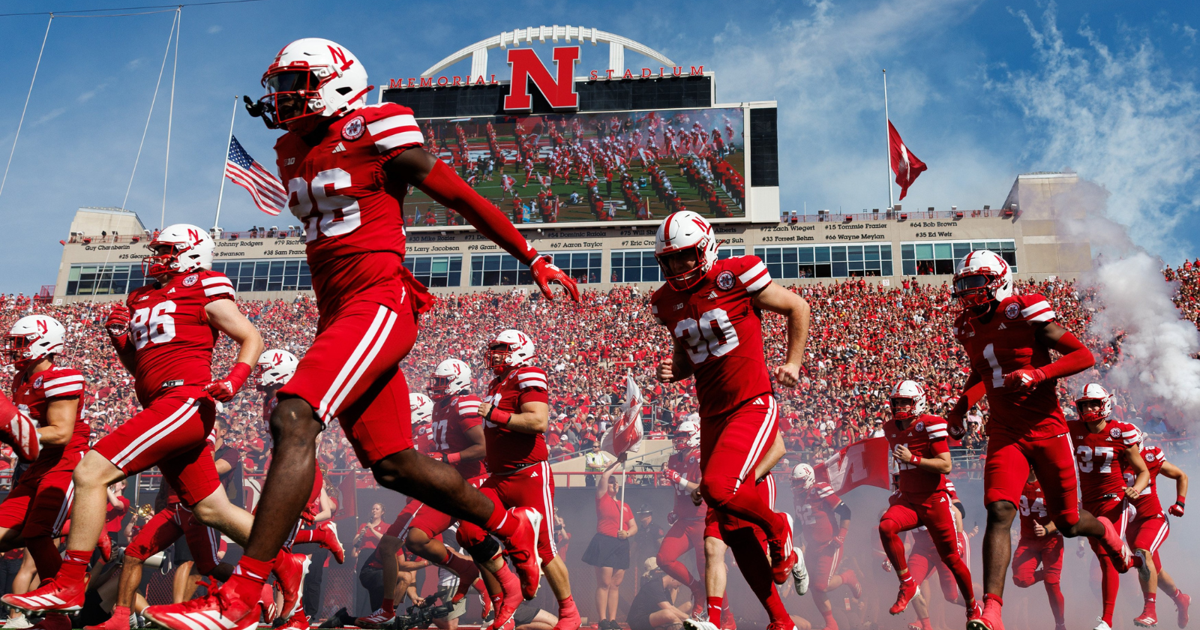
Coming into the season, Utah was favored to beat UCLA by 5.5 points. Coming into this weekend, the Utes are favored by 4.5 to beat Texas Tech.
So the Red Raiders should be as easy to dispatch as the Bruins were, right?
Yeah … I doubt it.
We’ve since learned that UCLA was the paper-est of tigers, flimsier than gas station toilet paper. Meanwhile, Texas Tech looks like a very formidable opponent, having dispatched with an admittedly cupcake schedule with force and ease, by both the eye test and by the numbers.
Here’s what to watch for on Saturday, no matter if you’re at Rice-Eccles Stadium or watching on TV.
Grades of a champion
There are sometimes reasons to distrust Pro Football Focus’ grades — in the end, they’re subjective, eye-test calls on who is most to credit or blame on every play.
But no one else is watching every snap of college football multiple times, grading each of the 22 players on a play-by-play basis.
So by that standard, Texas Tech is an elite, elite team. They rank second overall in the nation in PFF’s grades so far in 2025.
It’s everywhere, too: Texas Tech ranks as the best defense so far by these grades, with the sixth-best offense. The Red Raiders have stopped the run at a No. 1 level. Their receiver corps, pass rush group, and overall tackling efforts are ranked No. 3. There are just two facets of the game in which Utah’s grades have outranked Tech’s: run blocking and pass blocking.
There’s no doubt that tougher opposition from the Utes will test these ranks in a way that hasn’t happened so far against Arkansas-Pine Bluff, Kent State, and Oregon State. But there are a lot of college football teams this year who have had cupcake schedules, and the Red Raiders have looked as bright as any of them.
Money, money, money
All that talent comes at a cost, though.
According to a report from CBSSports’ Brandon Marcello — and much discussed elsewhere — Texas Tech might have the largest budget of any college football team, with a whopping $55 million going to its players this year.
It’s not clear where the Utes stand, but we know they have $20.5 million in revenue sharing to spend across all sports, and had an $8 million football NIL budget last year. Still, it is safe to assume that, whatever the Utes pay their players in total, it is less than the Red Raiders do.
We know money isn’t everything (hello, Nico Iamaleava), and Kyle Whittingham has long made top-tier competitive squads out of lesser-touted players than his opposition. But this will be one of his toughest tests in a while.
NFL preview in the trenches
Keep an eye out on the Rice-Eccles concourse on Saturday — you may see an NFL scout or 12.
Utah’s vaunted offensive line against Texas Tech’s expensive defensive rushers is the dream of pro talent evaluators. In particular, Utah offensive linemen Spencer Fano and Caleb Lomu, playing at either tackle, were both drafted in the first half of the first round in ESPN’s too-early 2026 mock draft in June.
But Texas Tech’s David Bailey, a Stanford transfer, could also see his name called on Day 1. Bailey’s incredibly fast and athletic, and he’s put that together with the Red Raiders so far. Fellow transfer Romello Height has been almost as effective, and has put his name squarely in draft conversations, though in the later rounds.
Who wins the battle here likely determines whether or not Utah can play its style of game. If the Utes can keep the ground game moving and give Devon Dampier chances to make plays, Utah can and should win. If Bailey, Height, and others keep the Utes from moving the chains on a regular basis, it’s hard to see big chunk plays saving them.
Take time away from Morton
The other end is less interesting for draftniks. But it might be more critical in the outcome of the game.
Utah edge rusher John Henry Daley has accumulated some gaudy stats so far, with significant help from linemen and blitzers across Utah’s defensive box (and sometimes even outside of it, with 13 safety or corner blitzes so far this season, according to PFF).
Tech’s O-line, though, has held very strong so far this year, giving pocket passer Behren Morton time to do what he wants. Those performances also came against blitzers 30 pounds lighter than themselves.
If Utah is going to stop Morton, it will have to pressure him time and time again. He’s been an incredibly efficient passer when given time — but graded out as just a 40 out of 100 when pressured in 2024 and a 38 in 2025 by PFF. (Dampier, meanwhile, is graded as a 70 when pressured so far this season.)
Morton rarely rushes (under three times per game last season) so collapsing the pocket and getting negative yards via sacks is the way Utah’s defense will have to come through — otherwise, Tech’s vaunted receiving core could eat against the Utes’ secondary with relative ease.
Devon Dampier’s mobility
The title of the video podcast of “Locked on Texas Tech this week asks it all: “Mobile QB PTSD: A new day or same story for Texas Tech versus a dual threat QB?”
It’s fair to say the Red Raiders have had a frustrating history in being able to contain quarterbacks with the athleticism of Devon Dampier.
The Utes have converted more third downs than any other team in the NCAA this year (32), with a 71% conversion percentage. Dampier has 13 conversions alone.
He’s been plenty successful on designed quarterback runs, averaging 5.8 yards per carry on each of those this season. But even more dangerous has been Dampier’s ability to turn a pass play into yards on the ground, where he’s averaging 8.3 yards per carry.
Texas Tech could well load up the box to try to prevent those runs; it also wouldn’t be surprising to see a quarterback spy used for much of the game, especially on those third downs.



